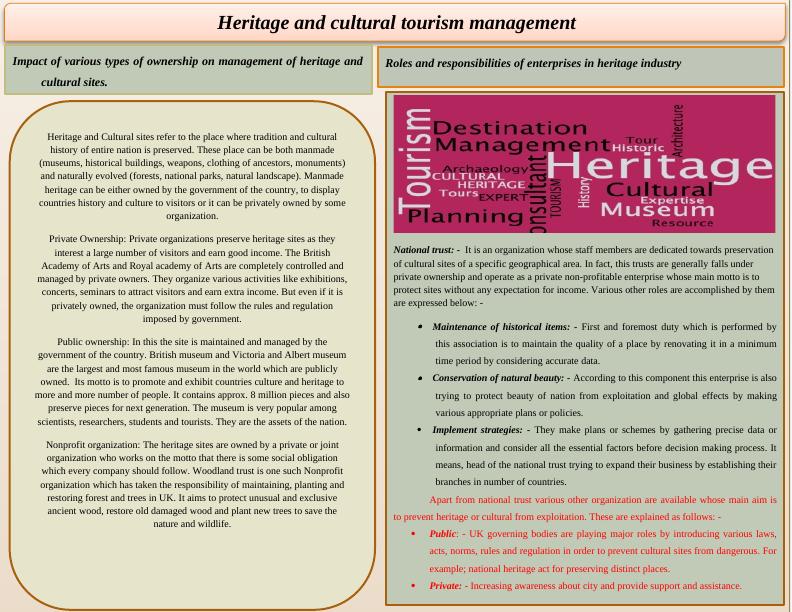Heritage and Cultural Tourism Management
This unit looks at heritage and cultural management and its role within the travel and tourism sector.
1 Pages817 Words78 Views
Added on 2023-03-24
About This Document
This article discusses the impact of various types of ownership on the management of heritage and cultural sites. It also explores the roles and responsibilities of enterprises in the heritage industry. Find study material, solved assignments, essays, and more on Desklib.
Heritage and Cultural Tourism Management
This unit looks at heritage and cultural management and its role within the travel and tourism sector.
Added on 2023-03-24
ShareRelated Documents
End of preview
Want to access all the pages? Upload your documents or become a member.
Development of Heritage and Cultural Industry in Tourism Business : Report
|17
|6600
|178
Heritage & Cultural Tourism Management Assignment
|16
|4335
|315
Report On Heritage & Cultural Tourism | Lhasa
|14
|3275
|77
Historical Sites Preserved and Managed by Stakeholders
|1
|1568
|114
Heritage and Cultural Tourism : Lhasa
|14
|3360
|240
Report on Heritage and Cultural Tourism Management (DOC)
|14
|4047
|53

